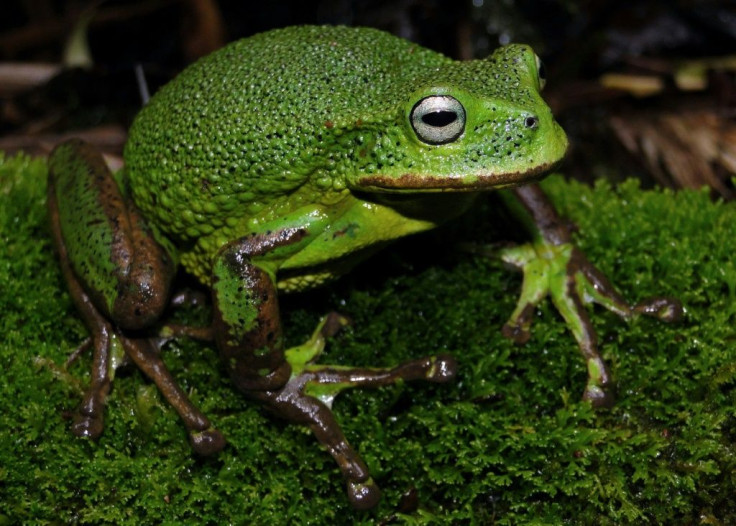Giant Creature, The Size Of 'Human Baby,' Shocks Villagers In The Solomon Islands
People in the Solomon Islands were shocked to find a giant creature, as big “as a human baby,” during a hunting expedition.
This frog was first discovered in April, but its photos went viral this week. Timber mill owner Jimmy Hugo, 35, was hunting a wild pig on the outskirts of Honiara, the capital of the Solomon Islands, when he came across the amphibian. Hugo said the frog was caught by a couple of dogs who were playing with it in the bushes. He managed to take pictures of the creature and get it back to his village.
The villagers were stunned to see the massive-sized frog and began calling it "bush chicken," according to Times Now. Hugo posted an image of his son holding the frog up for comparison. A video was also shared on YouTube showing the creature perching near a local's knee.
"I couldn't believe what I was seeing. It is the biggest frog I have ever seen in my life. It was the same size as a human baby. We call them 'bush chicken' because some villages seem to like them more than chicken, but they're difficult to catch,” Times Now quoted Hugo.
"A couple of dogs had caught this one and were playing with it in the bush, which is how I managed to get the photos of it. We did end up eating this one as it had already died but hopefully the next time we see one it will still be alive and we'll keep it that way."
The creature, believed to be a Shortland Island webbed frog, measured 10 inches from snout to butt with a weight of around 2.2 pounds, the New York Post reported.
“It’s quite uncommon for them to get to that size, so this one must have been quite old,” Jodi Rowley, the curator of amphibian and reptile conservation biology at the Australian Museum, told Australian Geographic, adding that she had “never seen one that big.”
The biggest frog species is the goliath frog, which is found in Cameroon and can grow 13 inches long and weigh up to 7.2 pounds.






















